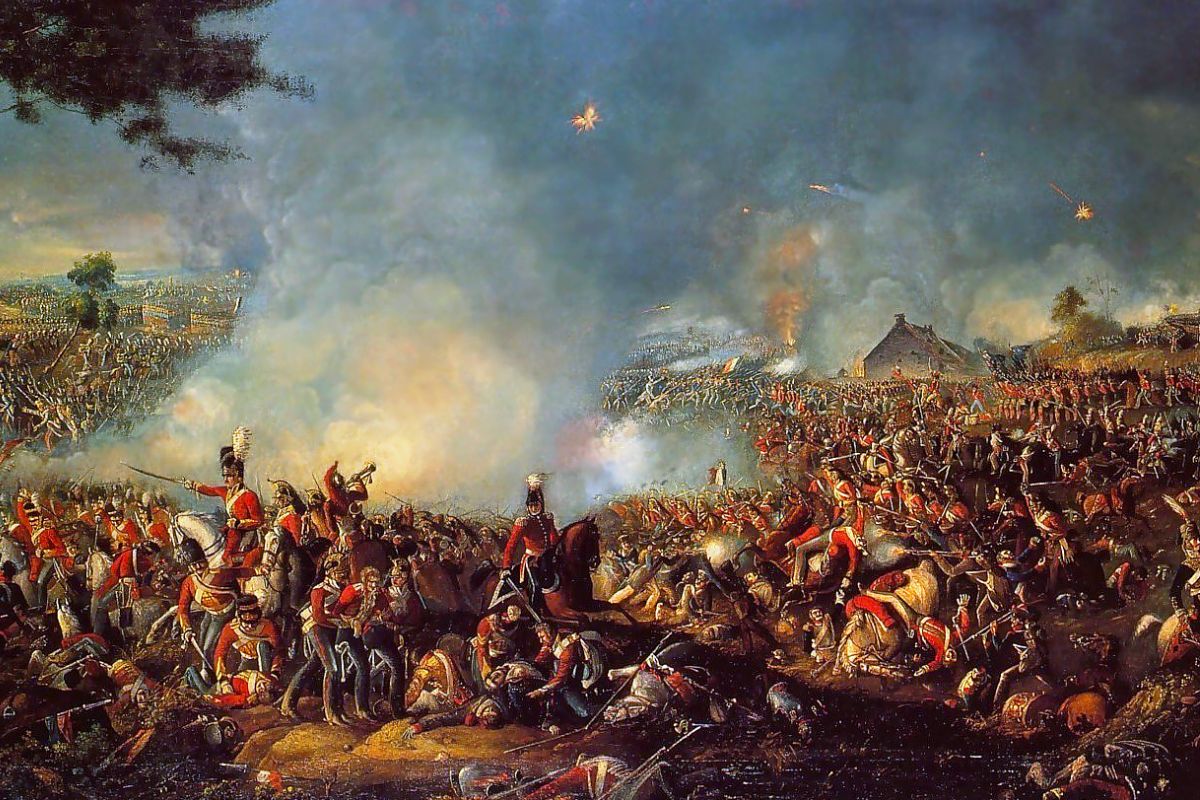

Their bones may have been sold to be processed into fertilizer, an archaeologist concludes in a new study.
It is perhaps one of the most famous battles in history: the Battle of Waterloo. During this battle – which took place on June 18, 1815 – the famous French general and dictator Napoleon Bonaparte was definitively defeated. It must have been a bloody battle; both the French and their opponents (British, Dutch, Hanoverian and Prussian units) suffered thousands to tens of thousands of fatalities. Remarkably enough, no mass graves filled with the bodies of these fallen soldiers have ever been found on and around the battlefield. And that begs the question: where have their remains gone?
Fertilizers
207 years after Napoleon found his Waterloo, that question still remains unanswered, Professor Tony Pollard has to conclude. Reason enough for the archaeologist, affiliated to the University of Glasgow, to bite the bullet once more. It results in a research article in which he still can’t quite solve the mystery, but the idea that the bones of the fallen soldiers have been sold as raw material for fertilizers seems to be gaining some ground.
Testimonials
For his new research paper, Pollard focused on previously unstudied descriptions and drawings of the battlefield made by people who visited the battlefield in the days and weeks after Napoleon’s demise. For example, Pollard studied letters from the Scottish merchant James Kerr who visited the battlefield in the days after the battle and described, among other things, how soldiers died in his arms.
The testimonies of Ker and others who visited the battlefield during the same period point to the existence of three mass graves that are believed to contain up to 13,000 bodies. Are we finally on the trail of the remains of thousands of fallen soldiers? It seems unlikely, says Pollard, pointing out that no mass graves have been discovered on and around the battlefield to date.
bone meal
And so the question remains: where did the fallen soldiers, who were laid to rest in mass graves, go? The mass graves may have been looted, Pollard says. “At least three news articles from the 1920s and beyond report the importation of human bones from European battlefields intended for fertilizer production,” Pollard said. “European battlefields may have been a convenient source of bones that were then ground into bone meal for use as fertilizer.” And it certainly doesn’t seem inconceivable that merchants would travel to Waterloo with similar goals in mind. “Waterloo started attracting visitors almost immediately after the smoke from the guns cleared,” Pollard said. “Many came to steal the belongings of the dead – some even stole teeth to make dentures. While others simply came to see what had happened. It is likely that bone suppliers also traveled to the battlefield with high hopes to secure their loot. The main targets would then be the mass graves, as they contained enough bones to make excavating them worthwhile. And the locals could have pointed these merchants to the location of the mass graves, as many of them still have vivid memories of the graves or perhaps even helped to excavate them. It is also possible that several guidebooks and travelogues describing the nature and location of the tombs actually served as treasure maps. Judging by the testimonies and the fact that bone meal was important for agriculture, it seems likely that mass graves in Waterloo were emptied to obtain bones.”
Follow-up research
It remains a hypothesis, Pollard emphasizes. But one that can be tested in the coming years. Pollard, for example, plans to travel to Waterloo, assisted by fellow archaeologists and volunteers. There, Pollard then plans to locate the mass graves that the witnesses mention in their letters and memoirs. “If human remains have been taken from those graves on a large scale, then there should be – at least in some cases – archaeological evidence for it.” In the coming years, Pollard hopes to take a closer look at much of the battlefield, together with colleagues and volunteers. “And identify areas where the Earth has been disturbed before.” The researchers have a clear goal in mind. “Getting a clearer picture of the fate of the dead at Waterloo.”
That fate is still shrouded in mystery two centuries after the famous battle. And that’s mainly because to date it has been rare for researchers to find human remains on or near the battlefield. In fact, only one complete skeleton of a fallen soldier has been found on the battlefield in all those years. In addition, in 2020 Pollard and colleagues near a farm that served as a field hospital at the time of the battle four amputated legs of soldiers found† But otherwise we are hardly aware of any material remains of this – quite bloody – battle.
Source material:
†New study suggests mystery still surrounds what happened to the bodies of Waterloo militaries” – University of Glasgow
Image at the top of this article: William Sadler (via Wikimedia Commons†